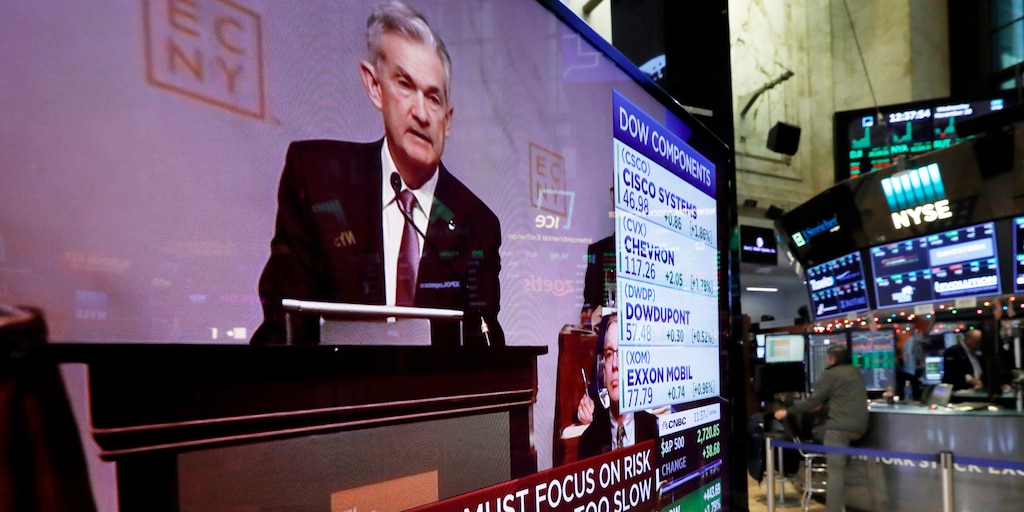 AP Photo/Richard Drew
AP Photo/Richard Drew
- US stock futures plummeted roughly 5% on Sunday evening, triggering a so-called limit down trading curb.
- The decline came hours after the Federal Reserve cut its benchmark interest rate to near zero.
- The market’s immediate reaction suggests investors aren’t convinced the Fed’s stimulus efforts will be enough to offset the negative economic impact of the coronavirus outbreak.
- Visit the Business Insider homepage for more stories.
US stock futures plummeted on Sunday evening, triggering a so-called limit down trading curb.
The decline – which approached 5% for S&P 500 before the limit was triggered – came hours after the Federal Reserve cut its benchmark interest rate to near zero in an attempt to stimulate the coronavirus-stricken economy. In addition to the rate cut, the central bank said it will increase its bond holdings by $700 billion and reduce reserve requirement ratios to 0%.
The market’s negative reaction suggests trader aren’t convinced the Fed’s stimulus efforts will be enough to offset the negative economic impact of the coronavirus outbreak. Investors have been faced with an increasingly uncertain landscape as virus cases have spiked and much of the nation has gone into lockdown.
Here’s where major US index futures stood as of 6:55 p.m. ET:
- S&P 500: 2,567.50, down 4.8%
- Dow Jones Industrial Average: 21,947, down 4.5% (1,041 points)
- Nasdaq 100: 7,556, down 4.5%
To be sure, volume in US futures trading is lighter than during normal hours, so price moves can be magnified on a percentage basis.
In Asian trading, the Nikkei 225 slipped 6.1%, while the Shanghai Composite slid 1.2%.
The Fed’s stimulus efforts come at a time when many major experts are calling for an economic recession to hit the US in upcoming quarters. JPMorgan adjusted its forecast last week and now expects the US to see a full-fledged contraction by July. As forecasts worsen, investors are still waiting for the official passage of a coronavirus-driven economic stimulus bill.
“The Fed can’t do all the work itself,” Ian Shepherdson, chief economist at Pantheon Macroeconomics, wrote in a note on Sunday. “Congress has no choice but to pass the House bill, or something like it, and then immediately start work on a *much* bigger bill to push cash at small/medium-sized businesses, the self-employed, and households.”
The sharp moves in futures contracts continues a volatile stretch for US equities. The Dow is fresh off a 1,985-point (9.4%) surge on Friday, much of which came amid President Donald Trump’s national address, which saw him outline efforts to combat the coronavirus. But that came just one day after the Dow suffered a historic sell-off, plunging 10% – the most since Black Monday in 1987.













